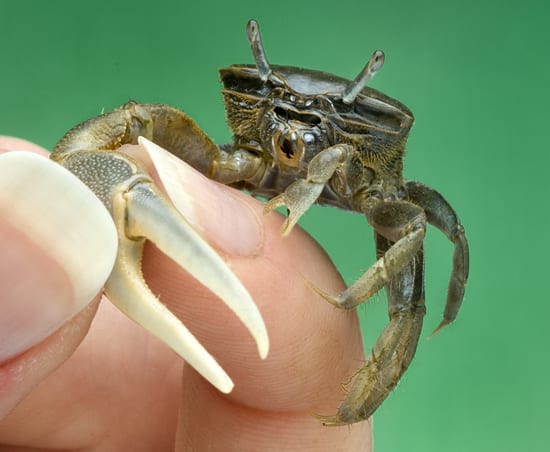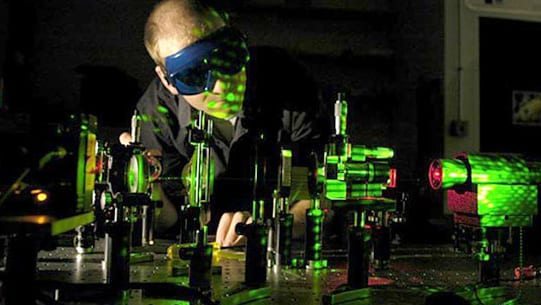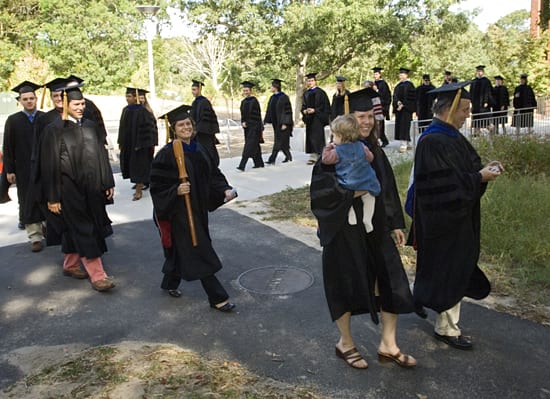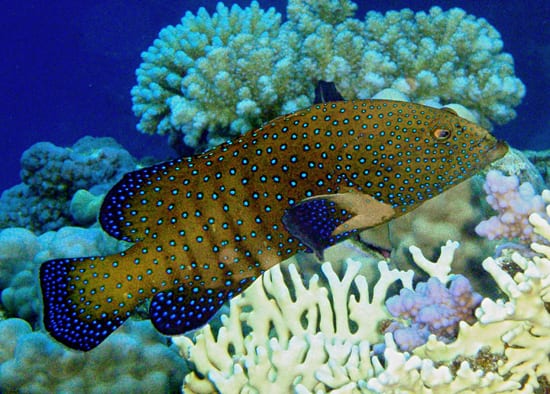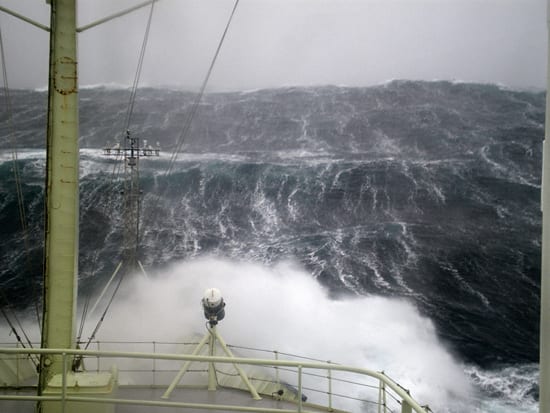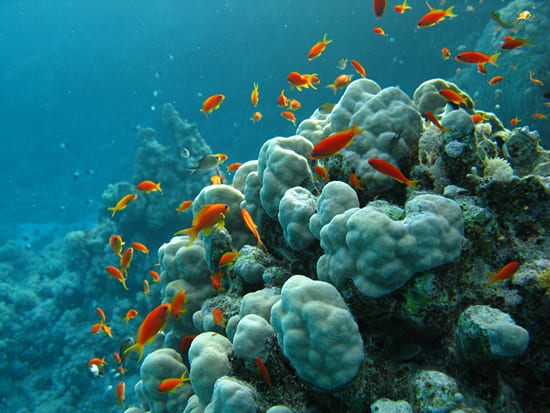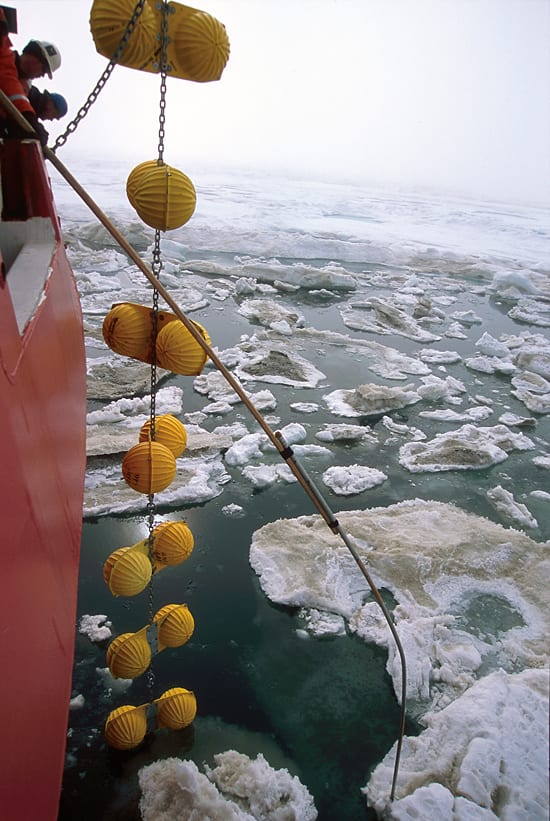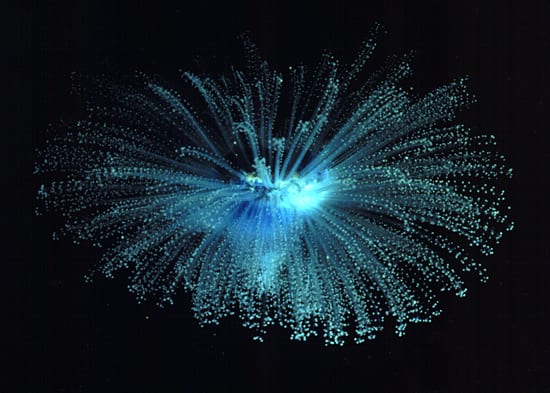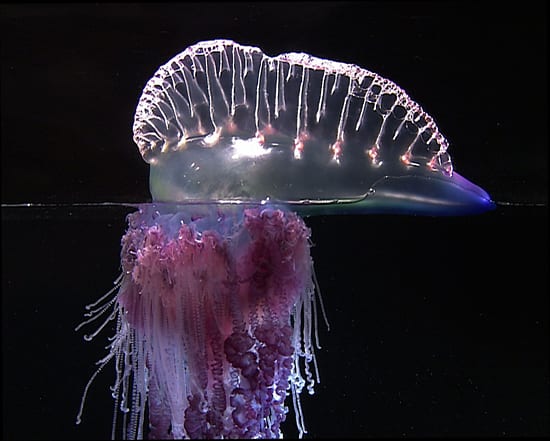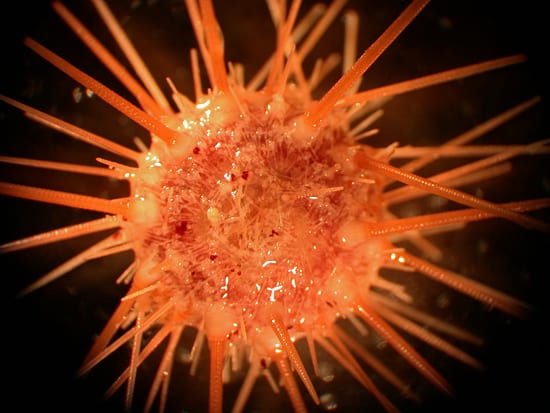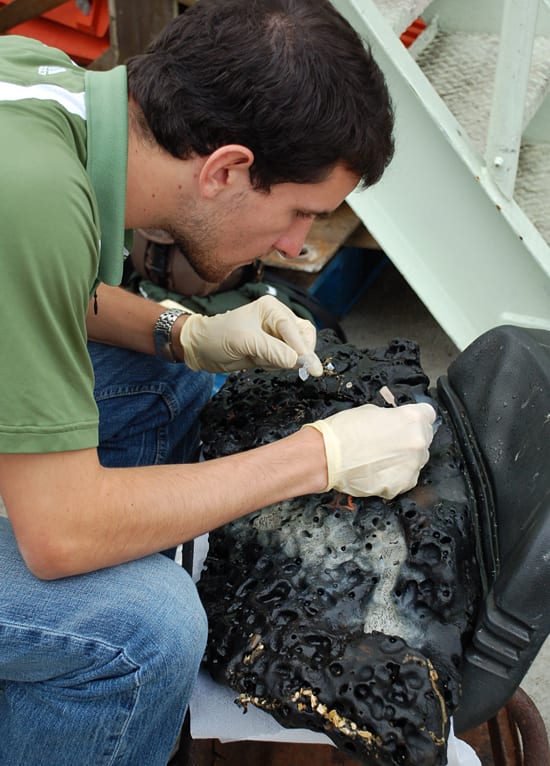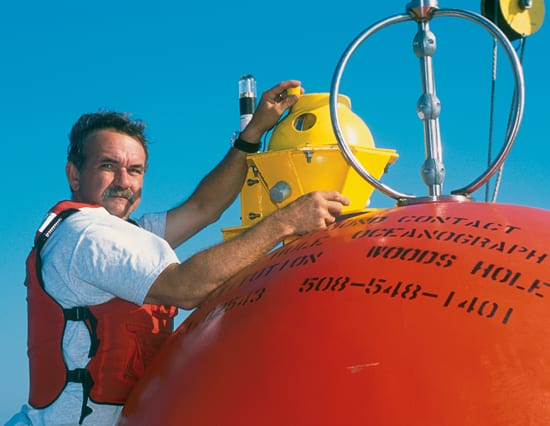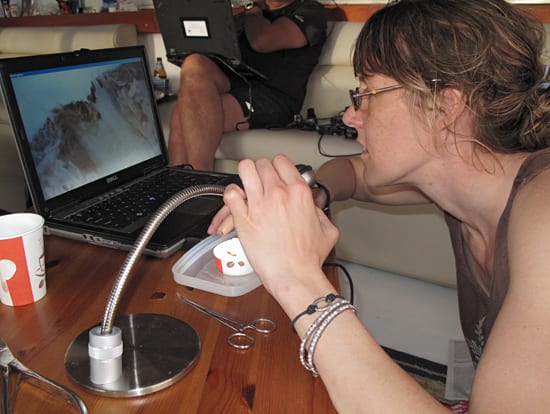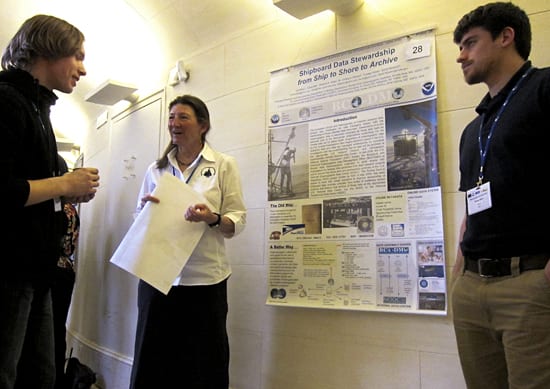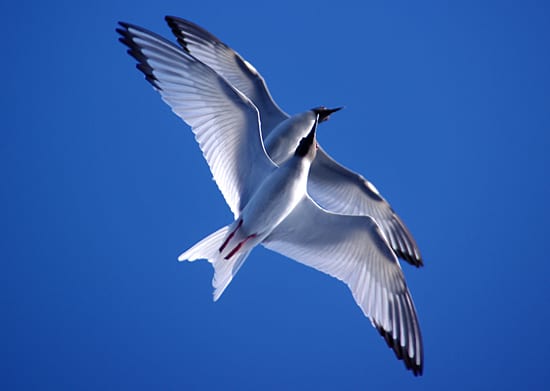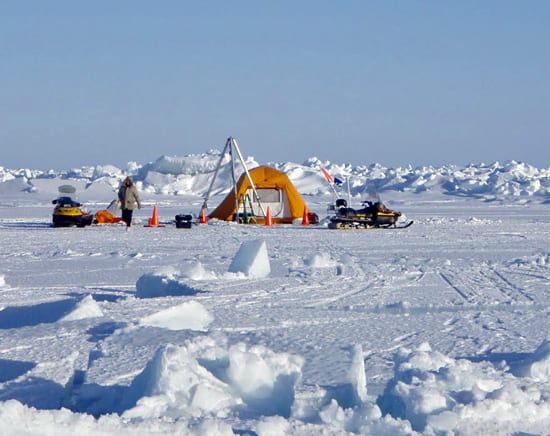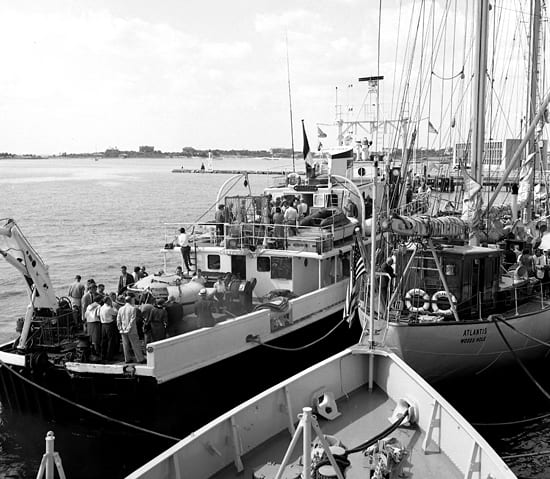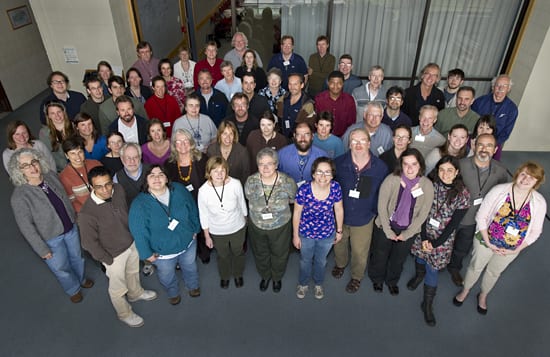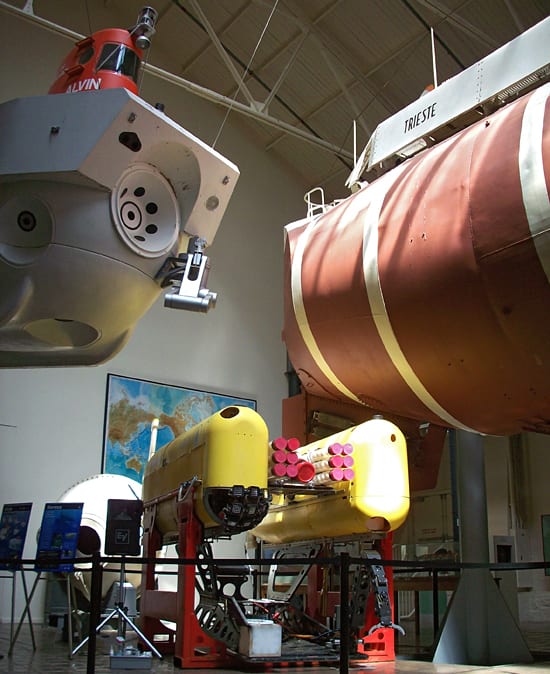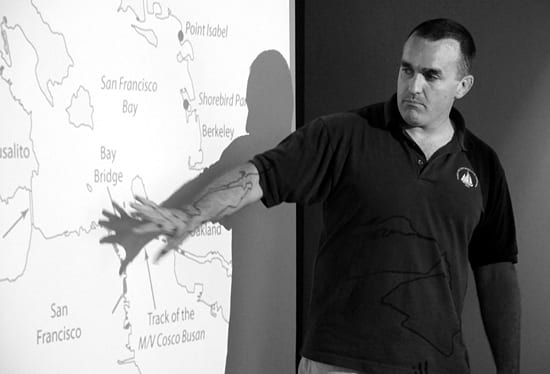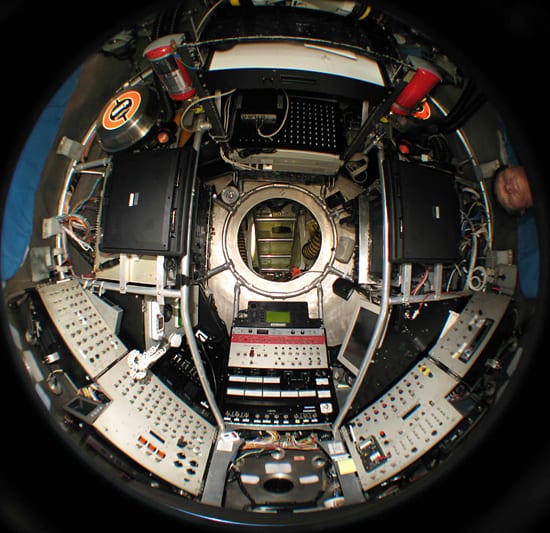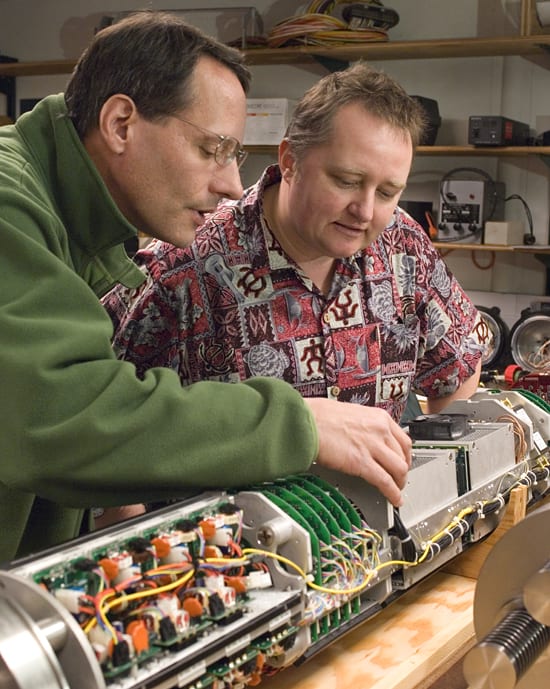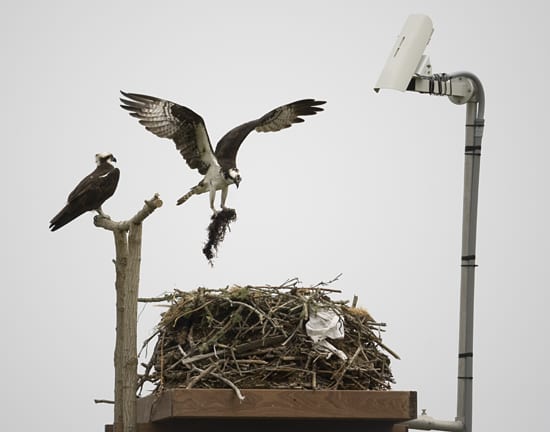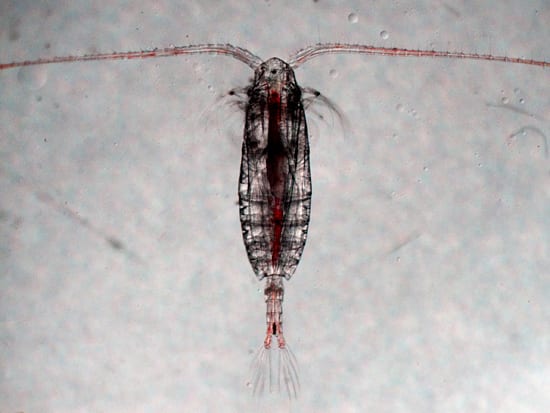Multimedia Items
Crabby Investigators
For decades, marine chemists and ecologists have been wondering: does the oil that was spilled into a Cape Cod salt marsh in 1969 still have an impact on the wildlife…
Read MoreHolography and Oceanography
By Ari Daniel :: Originally published online June 5, 2010
Read MoreHere come the graduates
Margaret Boettcher (carrying belaying pin) and Joanna Wilson (carrying daughter Raynham) make their way in procession to the 2005 commencement ceremony of the MIT/WHOI Joint Program in Oceanography and Applied…
Read MoreSwimming peacock
A peacock grouper (Cephalopholus argus) swims along the Farasan Banks in June 2009. WHOI biologist Simon Thorrold and international colleagues were there to conduct an ecological survey of corals and…
Read MoreA view from the bridge
It’s just another relatively routine autumn day in the North Atlantic for the WHOI-operated research vessel Knorr. On an expedition to the Irminger Sea in October 2007, scientists and crew…
Read MoreRed Sea reef
Reef-building corals create habitats for many other organisms. The coral reefs of the Red Sea are highly diverse and unique in the world, providing shelter and sustenance for abundant fishes…
Read MoreDangerous ice
During a four week expedition aboard the U.S. Coast Guard Cutter Polar Star in the summer of 2002, scientists and sailors battled Arctic Ocean ice to observe one of the…
Read MoreBlue rays
Is it fireworks, a flower, or a 1970’s fiber-optics lamp? None of the above!—it’s a colonial ocean animal related to jellyfish, called Porpita porpita. The colony has radiating blue “tentacles”—really…
Read MoreBeautiful but dangerous
Physalia physalis, commonly known as the Portuguese man-of-war or bluebottle, lives in warm waters worldwide and is famous for its painful stinging tentacles up to 50 meters (165 feet) long.…
Read MoreSweet Hitchhiker
This sea urchin was collected from the ocean floor near the Galapagos Rift in June 2002. The hitch-hiking urchin was found in the basket on the front of the Alvin…
Read MoreGood day at black rock
Blair Paul, a graduate student at the University of California, Santa Barbara, gently scrapes biological specimens from a chunk of asphalt that had been at the bottom of the Santa…
Read MoreSeeing the light
Prior to deployment, Senior Engineering Assistant Scott Worrilow checks the ARGOS beacon transmitter on a subsurface buoy. The buoy system is deployed with the transmitter in a standby mode that…
Read MoreA Preview of Coral Spawning
Assistant scientist Ann Tarrant dissects coral fragments and scans microscopic images for signs of egg development. Tarrant is working with research specialist Anne Cohen and postdoc investigator Neal Cantin to…
Read MoreHall of Science
Cyndy Chandler (center) and Tobias Work (right) talk with Alexander Smirnov (Arctic and Antarctic Research Institute, Roshydromet, Russian Federation) during a poster session at the International Conference on Marine Data…
Read MoreNight gulls, not owls
Two Galapagos Swallow Tailed Gulls soar in the sky above the R/V Atlantis during a 2010 expedition. The birds, which are the only fully nocturnal gulls and seabirds in the…
Read MoreSetting up an Arctic camp
The REMUS research crew in Barrow, Alaska, had to construct this camp–Ice Camp No. 2–because their first one was taken down by a traveling iceberg the night before.The WHOI team,…
Read MoreShipmates
The research vessel Atlantis at the Woods Hole Oceanographic Institution (WHOI) dock in 1959 along with the Calypso — a former British Royal Navy Minesweeper converted into a research vessel…
Read MoreCalling all sea squirt scientists!
Participants in the third International Invasive Sea Squirt Conference, held at WHOI April 26-28, 2010, pose for a commemorative shot. Sea squirts — or tunicates — are spongey, sack-like filter…
Read MoreThree deep in the museum
A full-scale model of the submersible Alvin (left) hangs in the US Navy Yard Museum in Washington, D.C., alongside the bathyscaphe Trieste (right), which, in 1960, made the only manned…
Read MoreThe Earl of Oil
WHOI chemist Chris Reddy describes his work on the November 2007 San Francisco Bay oil spill, which occurred when the M/V Cosco Busan struck the San Francisco-Oakland Bay Bridge and…
Read MoreFrom the Bottom Up
During a typical eight-hour dive, the Alvin personnel sphere carries a pilot and two science observers to the sea floor. This image of the sphere was taken with a fisheye…
Read MoreBuilding Deep Sea Vehicles
Andy Bowen and Chris German examine the interior of a robotic vehicle in the National Deep Submergence Laboratory at WHOI, a state-of-the-art lab for development of advanced vehicles for exploring…
Read MoreNew neighbors
During the week of May 3, 2010, a pair of osprey settled onto the nest on the WHOI Quissett campus, allaying fears that the nest would go unoccupied this year.…
Read MoreAn important link
Crustaceans come in all sizes. At the top of the scale are crabs with foot-long legs and tasty lobsters. Down near the bottom are copepods — critters the size of…
Read More
